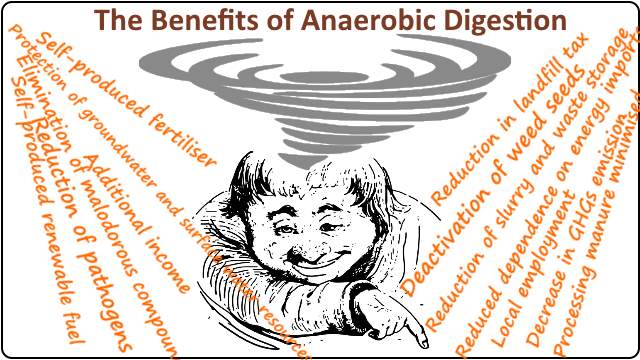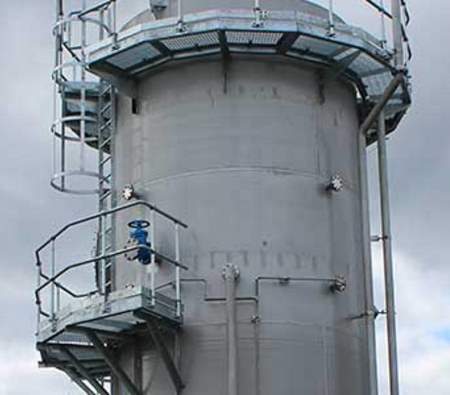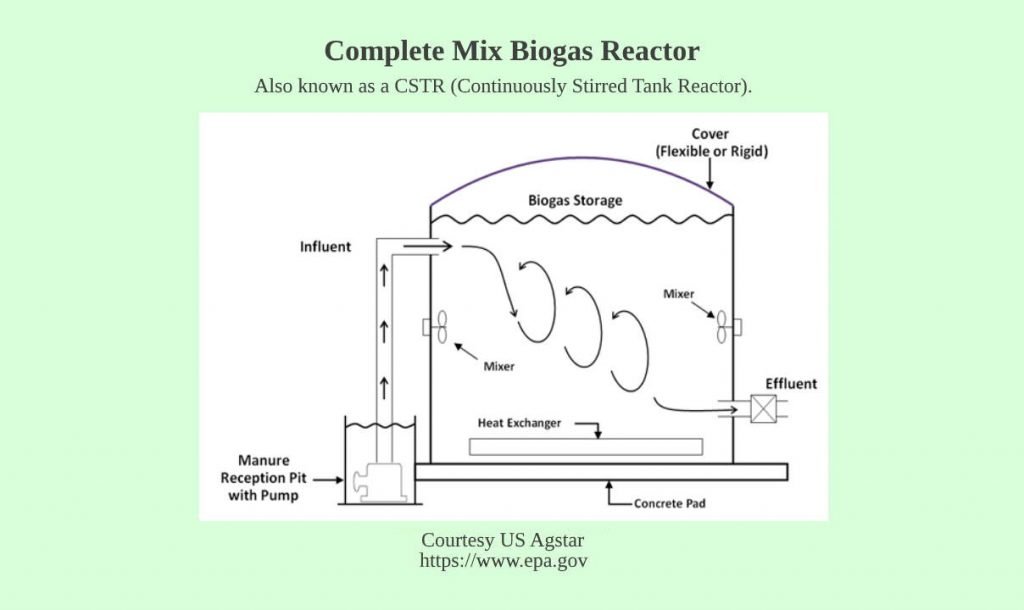Read on if you would like to discover the basics behind the anaerobic treatment of wastewater.
“The amount of wastewater produced globally increases in tandem with the global population. To safeguard human health and the environment, proper wastewater management is essential.”
The use of anaerobic bacteria to clean wastewater has become increasingly common in recent years. Anaerobic treatment is a novel and sustainable strategy for cleaning up wastewater that also has the added benefit of producing renewable energy. In this post, we'll go over what anaerobic treatment is, how it works, and the various uses it has for wastewater.
But, before we go any further don't get the idea that wastewater (foul sewage and industrial effluents) are routinely treated by anaerobic processes as their main treatment stage – often known as secondary treatment). It is the sludge from the aerobic treatment of wastewater (sewage) that is anaerobically digested in many sewage works, not the bulk of the flow, just the sludge settled out from it.
Low-temperature (unheated) anaerobic digestion and those large metal tanks used for sludge digestion are quite different in the way they operate.
However, companies such as NVP have in the UK/ Ireland developed an innovative process for low-temperative anaerobic wastewater treatment which can be used on raw wastewater.
Understanding the Basics of Anaerobic Microorganisms
When it comes to treating wastewater, one of the most efficient methods is anaerobic treatment.
The process of anaerobic wastewater treatment relies on the activity of anaerobic microorganisms, which are extremely efficient at breaking down organic matter in the absence of oxygen. Understanding the basics of these microorganisms is essential for anyone involved in designing or operating a wastewater treatment facility.
Anaerobic microorganisms are part of a complex ecosystem that includes bacteria, archaea, and other microbes. They play a critical role in the breakdown of organic matter, producing biogas and other byproducts that can be recovered for energy production.
Anaerobic wastewater treatment is an excellent option for municipal and industrial wastewater treatment, and it can be used to reduce the amount of organic matter and other pollutants in wastewater before it is discharged into the environment.
By understanding the basics of anaerobic microorganisms and how they function, engineers and operators can optimize wastewater treatment processes to achieve better outcomes in terms of efficiency, cost, and environmental impact.
Anaerobic Microorganisms in Wastewater Treatment: Breaking Down Organic Matter to Produce Biogas

Wastewater treatment is a critical process that involves removing contaminants and pollutants from water before it can be safely discharged into the environment. One of the most important processes in wastewater treatment is the breakdown of organic matter, which is achieved through the activity of anaerobic microorganisms.
These microorganisms are able to break down organic matter in the absence of oxygen, producing biogas as a byproduct. Biogas is a renewable energy source that can be used to generate electricity and heat, making it an important component of sustainable wastewater treatment systems.
In addition to producing biogas, anaerobic microorganisms also help to reduce the volume of waste that needs to be treated, making the overall wastewater treatment process more efficient and cost-effective.
However, the activity of these microorganisms must be carefully monitored and managed to ensure optimal performance and prevent the release of harmful byproducts into the environment. Through ongoing research and innovation, wastewater treatment professionals are continually finding new ways to harness the power of anaerobic wastewater treatment.
Anaerobic Microorganisms Convert Organic Carbon to Biogas with Little Sludge Production: A Comparison with Aerobic Systems.
Anaerobic wastewater treatment offers multiple advantages over aerobic systems, one being the production of less sludge.
Anaerobic digestion processes operate in an oxygen-free environment, enabling the microorganisms to break down organic matter in the absence of oxygen. This results in the formation of methane, which can be captured and used as a source of renewable energy.
Additionally, the anaerobic process produces minimal sludge, as the microorganisms consume the organic material more efficiently than in aerobic systems. This means that fewer nutrients are available for the growth of bacteria, reducing the amount of sludge produced.
In comparison, aerobic systems require large amounts of energy to supply the necessary oxygen, resulting in a more complex process and significantly higher sludge production.
Overall, the use of anaerobic microorganisms for the conversion of organic carbon to biogas is a highly effective and efficient process, offering multiple benefits. It is in the practicality of the design for the process, and the need for high temperatures for optimum biogas output that this type of treatment often falls short.

Uploaded by Azhari Hamid Nour
Understanding the four phases of organic matter degradation is key to the success of anaerobic wastewater treatment. The first phase, hydrolysis, is when the complex organic matter is broken down into simpler compounds.
The second phase, acidogenesis, is when the simpler compounds are converted into organic acids. The third phase, acetogenesis, is when the organic acids are converted into acetic acid, hydrogen gas, and carbon dioxide. The fourth and final phase, methanogenesis, is when the acetic acid is converted into methane gas and carbon dioxide.
It is essential to have a thorough understanding of the four phases of organic matter degradation to ensure the efficient and effective operation of anaerobic wastewater treatment. This knowledge can lead to better management practices and improved treatment processes that will ultimately benefit both the environment and society.
Challenges and environmental impacts of residual pollution and sludge formation in Anaerobic wastewater treatment systems.
Anaerobic wastewater treatment systems are designed to treat wastewater in a cost-effective and efficient manner, but they do pose a number of challenges, particularly in terms of residual pollution and sludge/ top crust formation.
One of the primary challenges associated with these systems is the accumulation of residual pollution, which can occur when wastewater is not properly treated. This can result in the release of harmful chemicals and toxins into the environment, posing a serious threat to both human health and the natural ecosystem.
The formation of sludge can also be a major issue, as it can lead to blockages in the system, reducing efficiency and increasing maintenance costs. To mitigate these risks and environmental impacts, it is important to properly monitor and maintain anaerobic wastewater treatment systems, ensuring that they are functioning at optimal levels and that any residual pollution or sludge crust formation is promptly addressed.
This can involve a variety of strategies, including regular cleaning and maintenance, proper treatment of wastewater to remove harmful chemicals and toxins, and the use of
Anaerobic Wastewater Treatment: Efficient and Cost-Effective with Minimal Sludge Production
 The process wins over aerobic treatment because it involves the use of microorganisms that do not require oxygen to break down organic matter in the wastewater, resulting in a reduction in energy consumption and carbon footprint.
The process wins over aerobic treatment because it involves the use of microorganisms that do not require oxygen to break down organic matter in the wastewater, resulting in a reduction in energy consumption and carbon footprint.
The minimal sludge production in anaerobic treatment means lower disposal costs, which is a major factor in wastewater treatment plants.
That is why anaerobic treatment is so often used after aerobic treatment.
Furthermore, the energy-rich biogas produced during the process can be harnessed as a renewable energy source, further reducing costs and improving sustainability.
Implementation of anaerobic wastewater treatment systems has proven to be effective in various industries, including food waste processing, and agricultural waste management.
The efficiency and cost-effectiveness of this method, for those uses, make it an attractive option for excess wastewater return activated sludge (RAS) treatment and for manure treatment.
Anaerobic Wastewater Treatment: Conversion to Biogas and Energy Production

The process involves treating wastewater in an oxygen-free environment, where microorganisms break down organic matter to produce biogas, which can be used for heating, electricity generation, or as a fuel source.
This not only reduces the environmental impact of wastewater but also generates a valuable energy source. The technology has proven to be highly effective in treating high-strength organic waste streams, such as food and beverage processing waste or agricultural waste.
The technology can also help reduce greenhouse gas emissions as it captures methane, a potent greenhouse gas, in the biogas produced during the process. Moreover, the utilization of biogas as a fuel source reduces reliance on fossil fuels and further reduces the carbon footprint of energy production.
Anaerobic Wastewater Treatment: Generating Energy from COD Conversion and Biogas Production
Anaerobic wastewater treatment is an innovative and sustainable approach to waste management that offers many benefits to both the environment and the economy.
By using specialized anaerobic bacteria to break down organic waste materials, this process generates energy from the conversion of chemical oxygen demand (COD) via carbon conversion into CH4 and CO2 (as biogas).
Biogas is a renewable energy source that can be used to generate electricity, heat, or even produce fuel. Therefore, it is a valuable resource that can be harnessed to reduce dependence on fossil fuels and decrease carbon emissions.
Additionally, the anaerobic treatment of wastewater is highly effective at reducing the environmental impact of wastewater discharge.
This process is particularly suitable for industrial applications where large volumes of high-strength organic waste are generated, and wastewater treatment facilities are required to meet strict environmental regulations. Examples are the brewing industry and soft drinks manufacturing.
Overall, the anaerobic treatment of wastewater represents an innovative and sustainable approach to waste management that offers significant economic and environmental benefits. By harnessing the power of biogas,
Comparing Oxygen and Power Requirements of Anaerobic and Aerobic Wastewater Treatment Processes and Methane Production
Anaerobic and aerobic wastewater treatment processes are two widely used methods in treating wastewater. Comparing these methods is important, as it helps identify the most energy-efficient and cost-effective approach to treating wastewater.

Oxygen and power requirements are key factors that can influence the choice of the treatment process. Anaerobic treatment processes require zero oxygen input compared to aerobic treatment processes, which require a constant supply of oxygen to support aerobic bacteria that break down waste.
However, anaerobic treatment processes require significant amounts of power to maintain the hot temperatures of the optimum mesophilic or (hotter) thermophilic anaerobic environments and mixing to facilitate the growth and activity of anaerobic microorganisms.
On the other hand, aerobic treatment processes are less energy-efficient, as they require more power to maintain the supply of oxygen needed for aerobic bacteria. However, the oxygen requirements of aerobic bacteria make this process very sensitive to fluctuations in oxygen supply, which results in the need for very reliable aeration systems.
Anaerobic Wastewater Treatment: A Sustainable Energy Solution with Minimal Waste Generation
Anaerobic wastewater treatment is a sustainable energy solution that has gained significant attention in recent times. This process has become increasingly popular due to its effectiveness in generating methane gas and reducing the energy use required as designers move to net-zero systems.

The main advantage of anaerobic treatment over aerobic treatment is that it produces methane gas, which can be used as a source of energy for various applications. This gas can be used to generate electricity or as a fuel for heating or cooking purposes. Moreover, the methane gas produced can be a source of revenue for industries that generate organic waste.
The process of anaerobic wastewater treatment requires minimal energy input, other than heating in cold climates, as the microorganisms responsible for the breakdown of organic matter are self-sustaining.
The anaerobic process is also capable of treating a wide range of organic effluent types and has been found to be most effective in treating high-strength organic waste. However, at low strengths and low ambient temperatures, the long retention times needed make it a high capital cost option.
Anaerobic Wastewater Treatment: Low Energy Consumption and Operational Costs with Minimal Environmental Footprint
Anaerobic wastewater treatment can have a minimal environmental footprint. The process produces sludge and effluent with comparatively lower quantities and concentrations of harmful substances than the input.
As mentioned previously, the biogas generated during the treatment process can replace fossil fuels, thus reducing greenhouse gas emissions. The technology also conserves valuable resources such as water and nutrients by recovering them from the waste stream.

Overall, anaerobic wastewater treatment provides a sustainable and at times cost-effective solution for wastewater treatment that is beneficial for both the wastewater industry and the environment.
Furthermore, wastewater treatment using anaerobic processes can also preserve biomass, which can be used as a fertilizer or soil conditioner. This not only reduces the amount of waste that needs to be disposed of, but it also reduces the need for chemical fertilizers, which can be harmful to the environment.
Overall, the many advantages of anaerobic processes for wastewater treatment make it a cost-effective and sustainable option with numerous benefits for both the environment and the economy.
Advantages and Disadvantages of Anaerobic Wastewater Treatment.
Anaerobic wastewater treatment is a sustainable and eco-friendly method used for purifying wastewater. The process involves the utilization of microorganisms that thrive in an oxygen-free environment to break down organic matter in wastewater, resulting in the production of biogas and treated water.
One of the major advantages of anaerobic wastewater treatment is its low energy requirements.
Since the process does not involve aeration or oxygenation, it is more energy-efficient than aerobic processes, which require electrical energy to maintain optimal oxygen levels. Additionally, the anaerobic treatment produces biogas, which can be utilized as a renewable energy source for heating, transport fuel, and electricity generation.
On the other hand, the anaerobic treatment process also has its downsides. One of the significant disadvantages is its low removal efficiency for nitrogen and phosphorus. These are essential nutrients for plant growth but can lead to eutrophication when discharged into natural water bodies.
Moreover, anaerobic wastewater treatment can be sensitive to fluctuations in pH, temperature, and organic loading
Importance of Adopted Acclimatized Sludge in Anaerobic Start-up Processes for Efficient Wastewater Treatment
The use of adopted acclimatized sludge in anaerobic start-up processes is crucial for efficient wastewater treatment. Adopted acclimatized sludge, also known as seed sludge, provides a rich source of microorganisms that are essential for establishing and maintaining anaerobic conditions.
The use of adopted sludge in the start-up process allows for the rapid formation of an active microbial community, which is required for the efficient degradation of organic matter within the wastewater.
Moreover, the use of adopted sludge in anaerobic start-up processes provides a cost-effective solution for wastewater treatment facilities, as it eliminates the need for costly microbial inoculants or other additives.
The use of adopted sludge also results in a reduced start-up time for anaerobic digesters, allowing wastewater treatment facilities to reach steady-state operations more quickly.
Furthermore, the use of adopted sludge has been proven to increase the stability and reliability of anaerobic digestion systems, resulting in improved treatment efficiency and reduced energy consumption.
Post-Treatment: The Solution for Inadequate Removal in Anaerobic Wastewater Treatment
Although the main advantage of the anaerobic process is the reduction of sludge production compared to aerobic systems. There has been a persistent problem of inadequate removal of contaminants in the effluent stream, which calls for post-treatment solutions.

To address this issue, post-treatment has been recommended as an effective option for further removal of residual impurities from the effluent stream. The post-treatment process can be achieved through various techniques, which include further biological treatment, membrane filtration, or the use of adsorption materials.
The selection of the appropriate treatment method is dependent on the quality requirements of the effluent and the economics of the overall process. It is essential to maintain a balance between the degree of contaminant removal and cost-effectiveness.
Challenges and Considerations in Anaerobic Digestion Process for Wastewater Treatment.
There are several challenges and considerations associated with the implementation of this process.
One of the major challenges is a lack of AD plants to cope with the inherent variability of the feedstocks, which can affect the efficiency and stability of the process. Additionally, the presence of toxic compounds such as heavy metals and antibiotics in wastewater can inhibit the microbial activity required for anaerobic digestion.
It is important to carefully consider the selection and pre-treatment of feedstock, as well as the monitoring and control of the process, in order to ensure consistent and efficient performance.
Furthermore, safety considerations must be taken into account, as the process produces potentially hazardous gases such as methane and hydrogen sulfide. Even carbon dioxide can kill by asphyxiation in confined spaces.
Adequate ventilation and gas detection systems, alongside safety procedures and training, are necessary to prevent accidents and ensure the safety of personnel.
Finally, factors such as the sacrificial energy used to run the plant and cost efficiency must be considered when evaluating.
Hydrolysis and Acidogenesis: Key Steps in Anaerobic Wastewater Treatment Process
Hydrolysis and acidogenesis are essential steps in the anaerobic wastewater treatment process, which is one of the most effective methods for the treatment of organic wastewater.
Hydrolysis is the initial and crucial stage in anaerobic degradation, where complex organic substances are converted into their simpler forms such as proteins, carbohydrates, and lipids by the action of hydrolytic enzymes. These enzymes are secreted by various microorganisms, including bacteria and fungi present in the wastewater.
The breakdown of these complex organic substances into their simpler forms is essential for the further degradation of the organic matter by microorganisms.
Acidogenesis, the second stage of anaerobic treatment, involves the conversion of the simpler organic compounds produced during hydrolysis into volatile fatty acids (VFAs) such as acetic acid, propionic acid, and butyric acid. These acids are produced by the action of acidogenic bacteria and are intermediate products of anaerobic wastewater treatment.
Featured Image Attribution: Sustainable by Nick Youngson CC BY-SA 3.0 Pix4free




